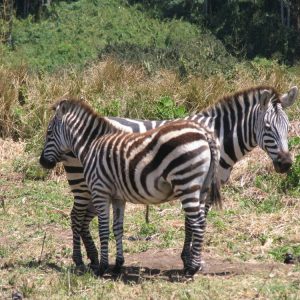Analyzing the Success Rate of the Marangu Route
The Marangu Route is one of the most popular routes for climbing Mount Kilimanjaro, the highest peak in Africa. Known for its gradual ascent and well-established huts, the Marangu Route is often chosen by those looking for a more comfortable trekking experience. However, the success rate of climbers on this route can vary depending on a number of factors.
Evaluating the Efficacy of the Marangu Route
The success rate of climbers on the Marangu Route is typically around 80%. This means that approximately 4 out of 5 climbers reach the summit of Mount Kilimanjaro when taking the Marangu Route. While this success rate is relatively high compared to other routes on the mountain, it is important to consider the factors that can influence the likelihood of reaching the summit.
One of the key reasons for the relatively high success rate on the Marangu Route is the gradual ascent profile. The route follows a more gentle slope compared to other routes, allowing climbers to acclimatize more effectively to the altitude. In addition, the huts along the route provide a comfortable resting place each night, helping climbers to recover and replenish their energy.
However, despite these advantages, there are still challenges that can impact the success rate on the Marangu Route. The altitude remains a significant factor, with climbers needing to acclimatize properly to avoid altitude sickness. Weather conditions can also play a role, with sudden changes in weather impacting the ability to reach the summit. In addition, individual fitness levels and preparation can greatly influence the success of climbers on the Marangu Route.
Factors Influencing Success on the Marangu Route
There are several factors that can influence the success rate of climbers on the Marangu Route. Firstly, physical fitness and preparation are crucial for climbers to tackle the demands of the trek. Training adequately before the climb, including cardiovascular exercise and strength training, can greatly improve the chances of reaching the summit.
Acclimatization is another key factor that can impact the success rate on the Marangu Route. Climbers need to allow their bodies time to adjust to the increasing altitude, taking it slow and steady to avoid altitude sickness. Staying properly hydrated and well-rested can also help with acclimatization.
Weather conditions are another important consideration for climbers on the Marangu Route. While the route is known for its more stable weather patterns compared to other routes, climbers still need to be prepared for sudden changes in weather. Proper gear, including warm clothing and waterproof layers, is essential for tackling the varying conditions on Mount Kilimanjaro.
In conclusion, the success rate of climbers on the Marangu Route is relatively high, but it is important for climbers to consider the factors that can influence their chances of reaching the summit. By focusing on physical fitness, acclimatization, and preparedness for changing weather conditions, climbers can increase their likelihood of success on this iconic route. For those interested in taking on the challenge of the Marangu Route, Sunset Africa Safari offers guided tours with experienced guides. For booking requests, clients can contact info@sunsetafricasafari.com.


